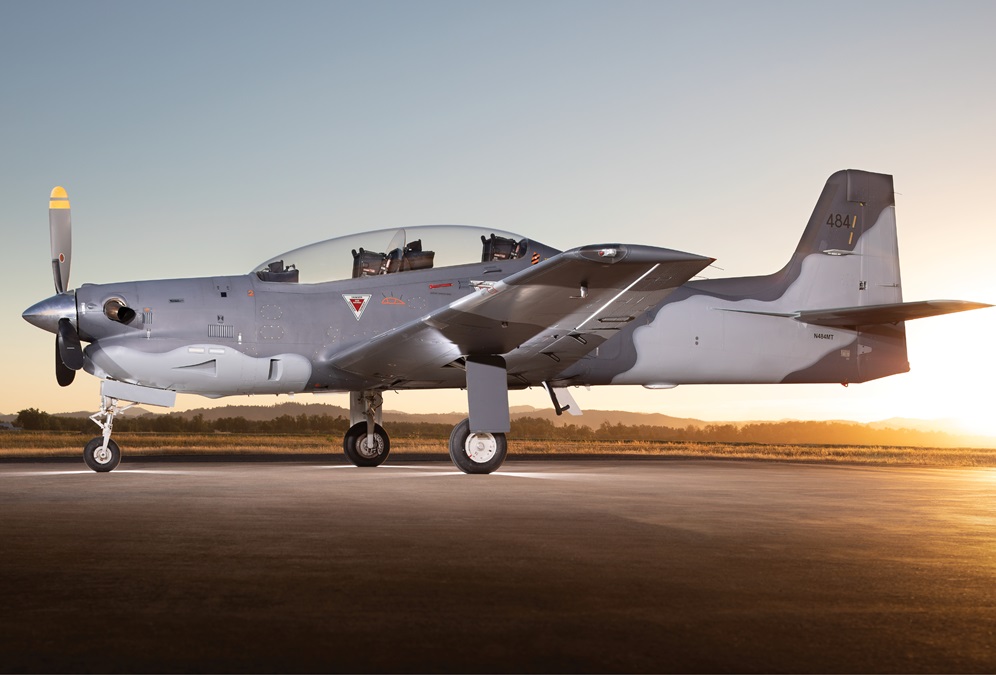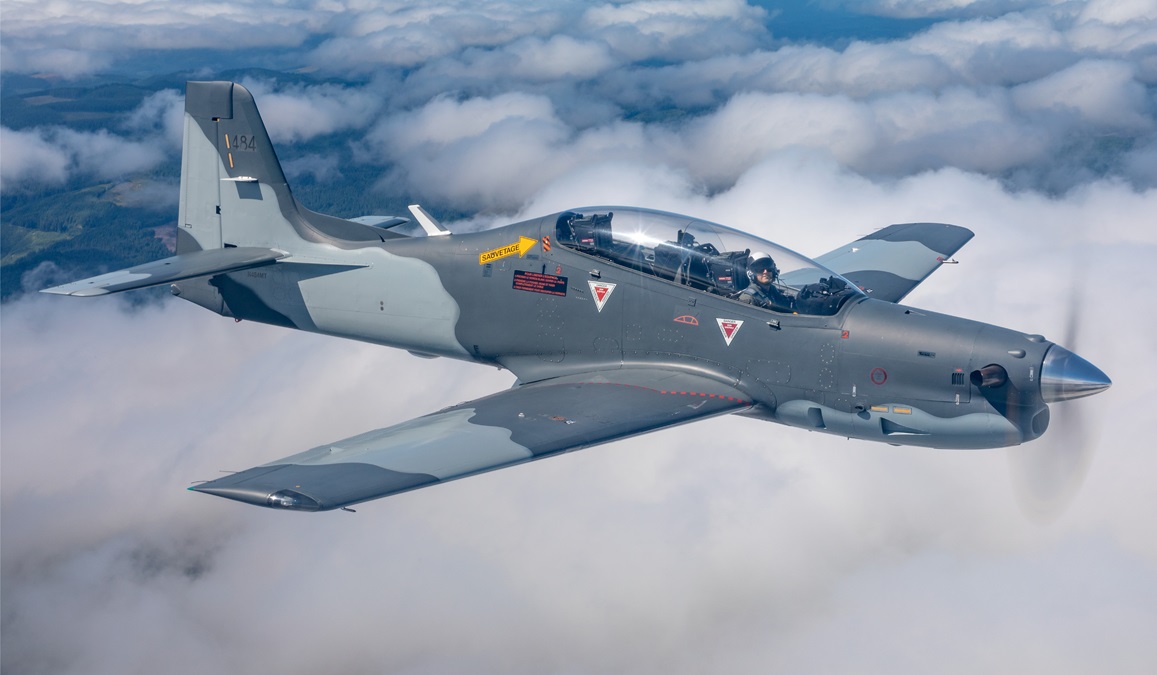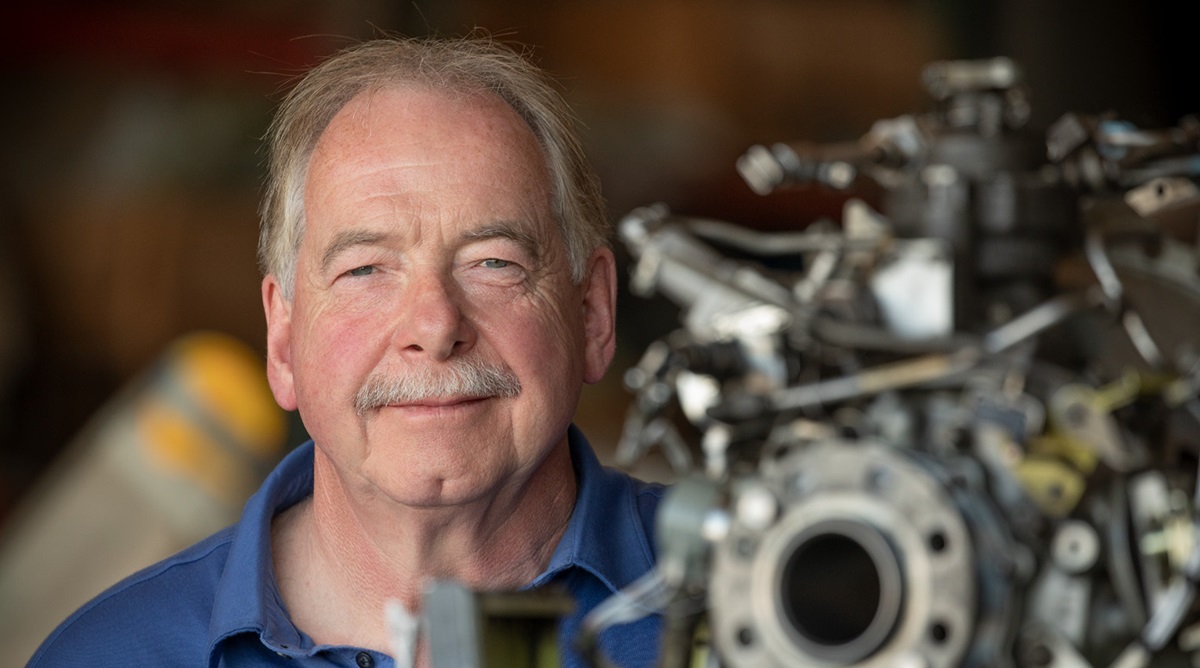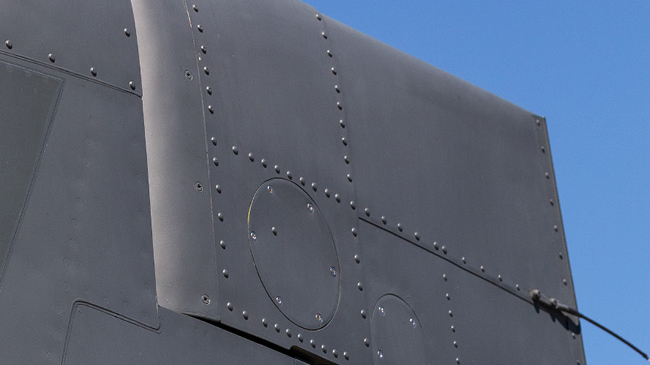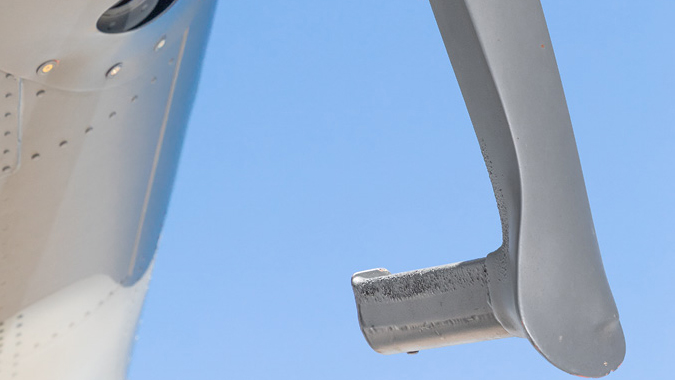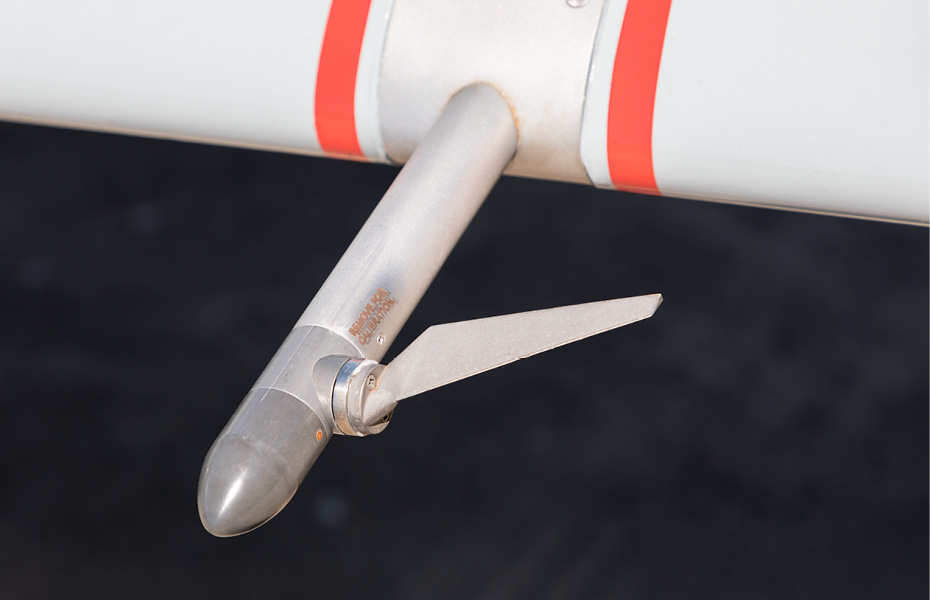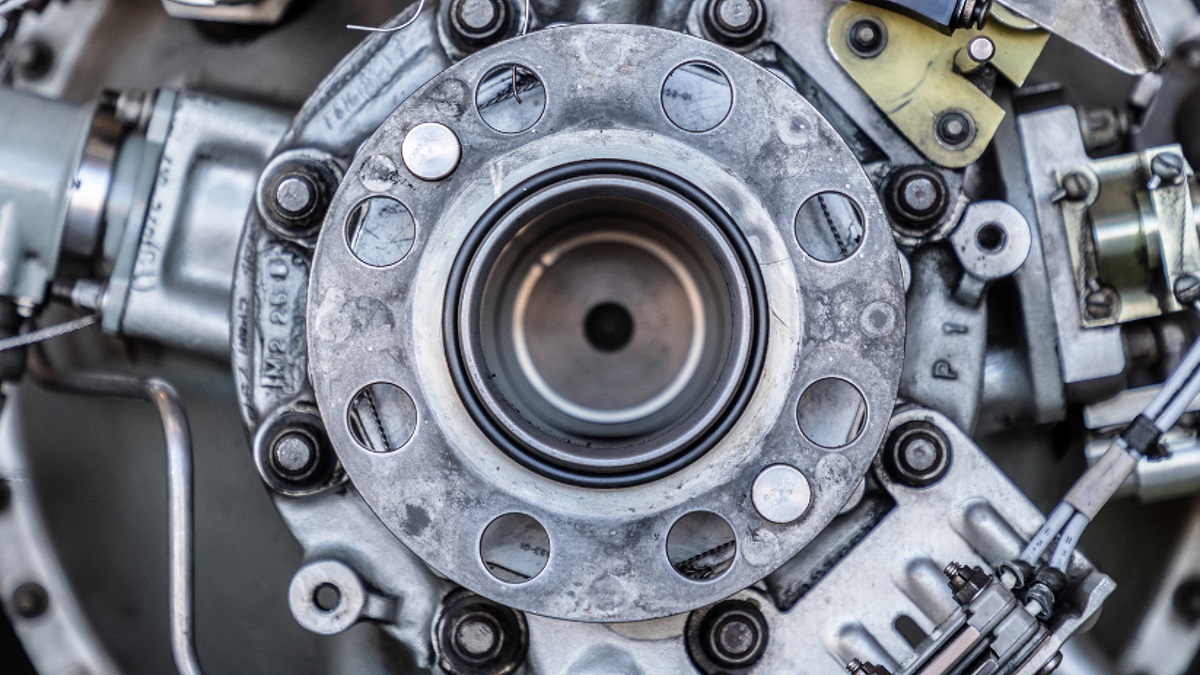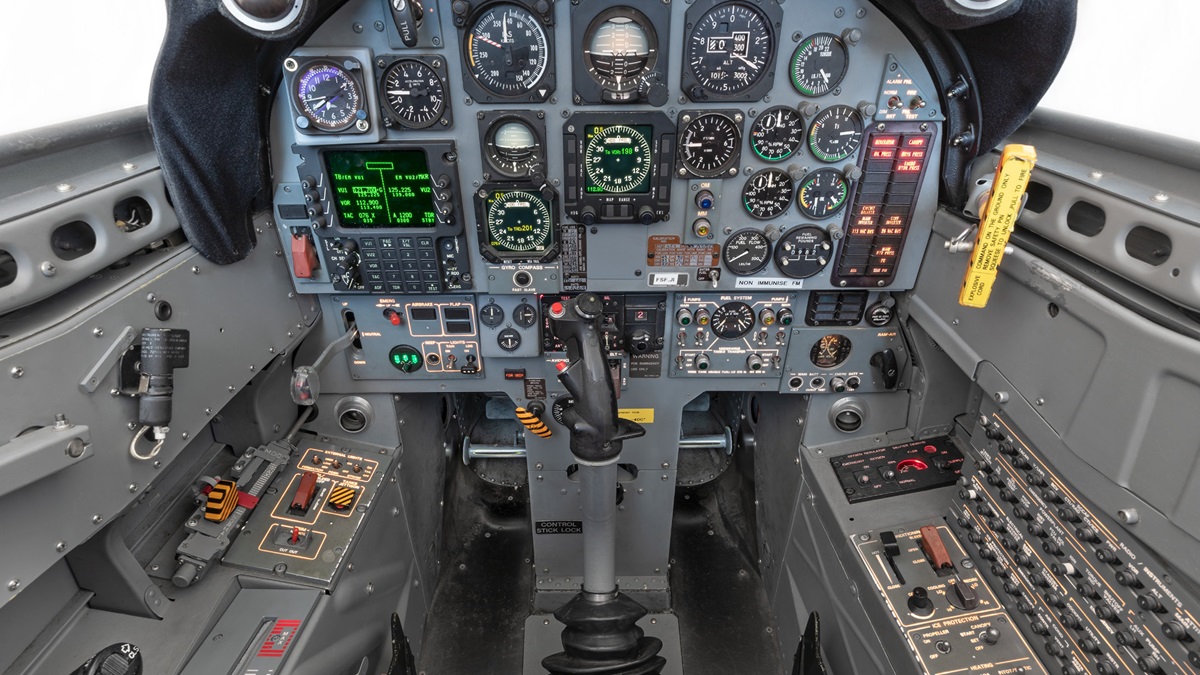Embraer Tucano: Next generation warbird
Former Olympian buys turboprop Tucanos (but hates selling them)
“Every pilot knows this is a no-no,” he said. “But watch how the airplane responds.”
As engine power increases, the Tucano’s nose rises to a nearly level attitude. The airframe buffeting stops as airflow smoothly reattaches to the wings, and in an instant the airplane is in level flight and accelerating.
This former French air force Tucano is the model made famous by the Brazilian “Smoke Squadron” (Esquadrilha da Fumaca), a military demonstration team known for tumbling lomcováks and sustained negative-G maneuvers. More powerful Super Tucanos are used by some air forces as ground attack aircraft, and the Super Tucano is currently competing against Raytheon’s T–6 Texan II in a U.S.-sponsored evaluation program.
How these exotic warbirds found their way to United States, however, is a story in itself.
A glaring flaw
Richard Slaney might never have gone into the aviation business, had an athletic career, or come to the United States if the Royal Air Force had simply accepted him for pilot training as he’d hoped.
But Slaney couldn’t stop growing, eventually topping out at 6 feet, 7 inches, a full six inches beyond the RAF height limit. Few military cockpits—and absolutely no ejection seats—could accommodate the future Olympic discus thrower.
Slaney came to Eugene, Oregon, for the first time in 1983 while preparing to compete for the United Kingdom in the 1984 summer Olympics. While in Oregon, he fell in love with U.S. track star Mary Decker, and the two have made their home there ever since.
Slaney learned to fly in a Cessna 172 at Eugene, and he later owned a Beech T–34 Mentor, then hulking, radial-engine T–28 Trojans. He had no clearly defined career ambitions, but warbirds eventually led him to aviation entrepreneurship. Now he owns two companies—Military Tech and Rotorcraft Support—which import, restore, lease, and sometimes sell former military aircraft to individuals, military contractors, and the U.S. government.
“What you see here is all the RAF’s fault,” Slaney said while giving a tour of a hangar that contains some of Slaney’s favorite aircraft: Embraer and Short Tucano turboprop trainers from France and the United Kingdom; Socata TB–30 Epsilons; and a pair of SIAI-Marchetti S.M. 1019s. “I never would have done any of this if the Royal Air Force had simply held up their end of the bargain.”
Slaney’s first flying lesson 30 years ago was a gift from his wife. His first foray into aviation business was meant to offset the cost of airplane ownership.
“I used to fix up and sell damaged rally cars when I was growing up in England,” said Slaney, 62. “That was the only way I could get my hands on the kind of car I wanted to drive. When I started flying, I did the same sort of thing with warbirds.”
Slaney bought four retired T–28s from an Arizona boneyard. By fixing them up and selling three of them, he’d hoped to have enough money left over to pay for the fourth, which he intended to keep. It worked, and that led to other, more ambitious projects.
About 20 years ago Slaney’s fledgling firm bought several UH–1 Huey helicopters from the boneyard, returned them to service, then leased them to the U.S. military and private contractors.
Slaney comes from a working class family and speaks with an undiluted English accent. Despite the fast-paced, high-stakes nature of his business, he projects a calm and unhurried manner as well as a wry, understated sense of humor.
“I’ve always considered ‘plan’ a four-letter word,” he said. “I’ve never had any overarching vision for my business or career. I just try to spot opportunities when they come along. And when I commit to a course of action, I see it through to completion.”
Slaney twice won Britain’s Strongest Man competitions, in 1980 and 1982, and discus records he set in college still stand decades later. He regards those feats as ancient and obscure trivia, however, and a recent injury makes such exploits feel especially distant.
Slaney’s right foot and ankle are in an orthopedic boot, the result of a broken foot. Yet he flies despite the painful injury.
“I may ask you to kindly apply right rudder on climbout if my foot fails me,” he told a passenger. “Or perhaps I’ll just whimper.”
Slaney started his business with a $20,000 bank loan, and his success is built on steadfastness and consistency—not marketing. There are no signs or external markings on his hangar, and few of those who do business with him are aware of his former athletic glory. There’s an iconic photo from the 1984 Olympics of Slaney carrying his injured fiancée off the track after she became entangled with another runner and fell during a race she was widely expected to win—and a pained expression contorts his face at the mention of it.
“The worst day of Mary’s life,” he said. “Mine too.”
Slaney started flying turboprops when he bought a NDN Firecracker, the losing airplane in a U.K. trainer competition in the 1980s. He bought his first Tucano sight unseen when the RAF began retiring them a decade ago, and it won him over. He won’t say how many Tucanos and spare parts he’s acquired since then, but his company has sold about 10 of the high-performance trainers. Retail prices are typically about $1 million each.
Slaney scours the planet for aviation opportunities, yet he admits there’s a glaring flaw in his business strategy: his aversion to selling just about anything. Most entrepreneurs celebrate profitable sales. Slaney laments them.
“I’ve been told more than once to seek therapy for this mental condition,” he said. “Yet I just can’t help myself. I’ve regretted everything I’ve ever sold. I get emotionally invested in rally cars, airplanes, you name it. I’m the world’s worst salesman because I sincerely don’t want to part with anything.”
Novel experience
My introduction to the Tucano takes place under ideal conditions at Eugene on a sunny, calm, 70-degree day with light winds. The gray and white airplane stands tall on straight, familiar-looking landing gear that happens to be identical to those on Piper Navajos. A retractable step and handhold assist in climbing onto the left wing, and stepping over the canopy rail leads to the tandem cockpit.
“I’ve always considered ‘plan’ a four-letter word. I’ve never had any overarching vision for my business or career. I just try to spot opportunities when they come along. And when I commit to a course of action, I see it through to completion.” —Richard SlaneyThe Martin-Baker ejection seats are deactivated, and Tucano owner Behel and I strap into five-point aerobatic harnesses.
Once the swing-over canopy comes down, it’s time to start the 750-horsepower PT6A-25 engine. Startup is normal, and as soon as the engine is running, the airconditioning kicks in with a steady breeze from four adjustable vents.
The rear cockpit is particularly roomy, and adjustable rudder pedals and firm, contoured seats make the Spartan surroundings comfortable.
A single lever controls both engine power and propeller rpm. From idle position (there’s no flight or ground idle), the power lever moves forward all the way to 100 percent. Moving the lever aft to flat pitch or reverse requires lifting it over a gate. Three-axis trim is all electric via a hat switch on the stick and a rocker switch on the power lever.
Aligned with Runway 16R, I lower the flaps to 15 degrees and push the power lever all the way forward. Acceleration is moderate and the airplane reaches its 85-knot rotation speed after a ground roll of 1,500 feet.
Left-turn-inducing P-factor is easily counteracted with right rudder, and I raise the landing gear, then flaps, and set a 12-degree pitch attitude for the climb while the Tucano quickly accelerates to its best-climb speed of 140 KIAS. With full tanks (182 gallons/1,220 pounds) and two aboard, the airplane ascends at 2,200 fpm.
We climb to 8,000 feet and go through a series of familiarization maneuvers, slow flight, stalls, and aerobatics—and the Tucano shows itself to be graceful, energetic, powerful, and obedient. Behel demonstrates a series of stalls that show the airplane’s benign departure characteristics, and positive-G aerobatic maneuvers reveal its grace and agility. Control forces are moderate and well balanced throughout the airplane’s normal speed range. Full-deflection aileron rolls at 200 KIAS produce a roll rate of 120 degrees per second, and over-the-top maneuvers (loops and half-Cuban eights) entered at 220 KIAS and 90 percent power gain nearly 3,000 feet in the climb.
Point rolls are crisp and precise, but stopping the roll requires opposite aileron—not just neutral.
Visibility is outstanding from either seat, but the back-seat pilot doesn’t have a good view of the front-seater. The back seat is so elevated that only the top of the front-seat pilot’s head is visible from behind. The two cockpits are identical, but only the front-seater has access to the manual fuel control unit (which only is used during an engine emergency).
There’s a commanding view from both cockpits, and sublime control harmony makes maneuvering precise and pleasurable. There’s a great deal of built-in margin as we never come close to the speed or G limits during a relatively strenuous introductory flight.
Returning to the airport, we start an overhead approach at 180 KIAS, deploy the speed brake 1,200 feet above the runway, then lower the landing gear and flaps on downwind. At idle power, the three-blade prop flattens out and deceleration is rapid, so I raise the belly-mounted speed brake (using a thumb switch on the power lever) on final approach.
About 65-percent power on final holds the 95-knot target airspeed, then the power comes off at about 10 feet agl and the airplane settles in. Once down, pulling the power lever up and over the stop to flat pitch nets a ground roll of about 2,000 feet with light braking.
Behel, 28, has owned and flown his Tucano for more than a year, and he uses it for both sport and business flying.
“When I’m going places, I typically cruise in the mid-teens at about 230 knots [true] burning about 40 gallons an hour,” he said. “That’s a little faster than a Baron at about the same fuel consumption—but the Tucano uses jet fuel that costs less. And it’s way more enjoyable to fly.”
Of course, the Tucano has just two seats, limited baggage space, and no autopilot or wing deice/anti-ice systems. But that’s just fine with Behel, who says he rarely flies with more than one other person along.
“For the passenger, flying in the Tucano is usually a totally new and novel experience,” he said. “No one who does it ever forgets it.”
Extreme performance
The Tucano is a highly refined, rugged, reliable, and versatile airplane that represents an entirely new category of warbird for civilian owners. Historic piston warbirds from the World War II era have long been symbols of pilot achievement, status, and prestige. Now, turboprop military trainers like the Tucano, PC–7 and PC–9, and turbine T–34s offer similar performance with far great reliability and ease of maintenance.
Warbird pilots seeking a tangible connection to history will always be drawn to iconic P–51 Mustangs, Corsairs, Spitfires, and other sweet-sounding piston fighters that shaped the twentieth century. Those seeking exceptional performance without the mechanical complexity or parts scarcity of piston warbirds have options in turboprop trainers.
The Tucano is exhilarating to fly. It’s made from widely serviceable components (PT6A, Piper landing gear, Cleveland wheels and brakes). And its sturdy, nosewheel design makes it far more forgiving on the ground than the heavy tailwheel airplanes that make up the traditional warbird fleet.
Turboprops are costly, thirsty, and loud, and they can’t make the soul-stirring music of a V-12 or a geared radial. But for those seeking extreme performance in a robust, thoroughly tested, authentic military aircraft, nothing can touch them.
Slaney, a piston warbird pilot before he ever saw a Tucano, said the Brazilian-made former military trainers offer a unique combination of exquisite flying qualities, exceptional performance, and ruggedness.
“I had high expectations going in, but this airplane has exceeded them all,” he said. “I can’t get enough of them.”
Email [email protected]

